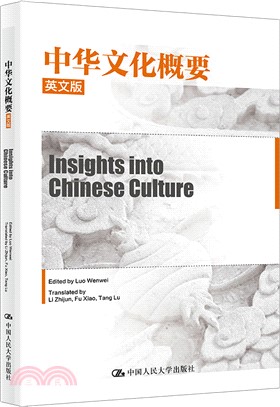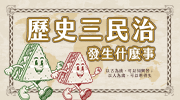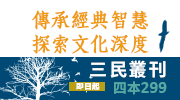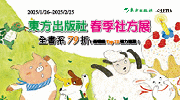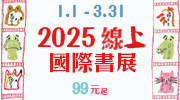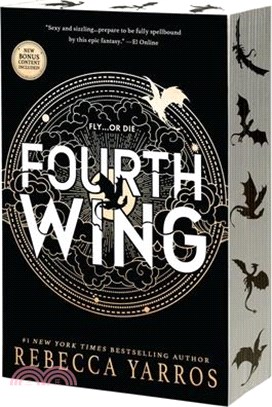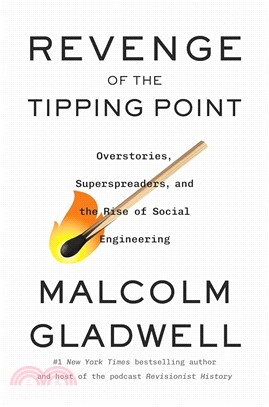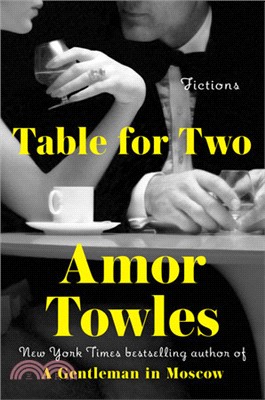商品簡介
作者簡介
目次
相關商品
商品簡介
本書為《中華文化概要》英文版,堅持以馬克思主義基本理論與中國歷史實際相結合的大歷史觀和文化演進邏輯統領全書撰寫思路。導言闡述大歷史觀,中華之為中華;第一章盤點中華文化形成的不拔之基;第二章洞悉儒道佛哲學思想;第三章提煉千年道統的中華文化基本精神;第四章展現道不離器的中華文化基本形式;第五章梳理美美與共的中外文化交融與互鑒;第六章闡釋其命維新的中華文化傳承與創新及其現實路徑;第七章彰顯中華文化的時代價值和天下大同的世界意義;結語呼應前言,同時呼籲廣大港澳臺僑學生融通中外文明,為構建“和而不同、美美與共”的人類命運共同體貢獻青春力量。
本書可作為高校港澳臺僑學生通識教育的通用教材,也可作為高校通識教育課程的選用教材,還可作為廣大讀者研習中華文化的參考書。
本書可作為高校港澳臺僑學生通識教育的通用教材,也可作為高校通識教育課程的選用教材,還可作為廣大讀者研習中華文化的參考書。
作者簡介
主編:
駱文偉,華僑大學馬克思主義學院副教授、學術碩導,MBA教育中心專業碩導、通識教育研究中心主任,暨南大學國家首批“鑄牢中華民族共同體意識研究基地”兼職研究員、華南師範大學港澳青少年教育研究中心兼職研究員。主講“中華文化概要”“思想道德與法治”“世界遺產在中國”等課程。
譯者:
李志君,華僑大學外國語學院教授,學術碩導和翻譯專業碩導。研究興趣包括語料庫話語研究、英語教學、語用學和語料庫翻譯。在Journal of Pragmatics等國際同行評議的SSCI和A&HCI期刊和國內重要期刊上發表了近30篇相關論文,出版了各類書籍7本(其中2本教材),各級課題6項。
駱文偉,華僑大學馬克思主義學院副教授、學術碩導,MBA教育中心專業碩導、通識教育研究中心主任,暨南大學國家首批“鑄牢中華民族共同體意識研究基地”兼職研究員、華南師範大學港澳青少年教育研究中心兼職研究員。主講“中華文化概要”“思想道德與法治”“世界遺產在中國”等課程。
譯者:
李志君,華僑大學外國語學院教授,學術碩導和翻譯專業碩導。研究興趣包括語料庫話語研究、英語教學、語用學和語料庫翻譯。在Journal of Pragmatics等國際同行評議的SSCI和A&HCI期刊和國內重要期刊上發表了近30篇相關論文,出版了各類書籍7本(其中2本教材),各級課題6項。
目次
Introduction The Grand Historical Perspective: What Makes China, China?
1.1 What Is "Zhongguo"? What Is “Zhonghua”?
1.1.1 What Is "Zhongguo"?
1.1.2 What Is "Zhonghua”?
1.2 Overview of Chinese Culture
1.2.1 Chinese Culture
1.2.2 The Chinese Nation
1.2.3 The Chinese Nation as One Community
1.3 Chinese Culture from a Grand Historical Perspective
Chapter 1 The Origin of Chinese Culture
1.1 Geography
1.1.1 Features of Chinese Geography
1.1.2 Geography and Chinese Culture
1.2 Economy
1.2.1 Two Economic Forms in Ancient China: Farming Economy and Nomadic Economy
1.2.2 Incomplete Natural Economy and Capitalist Economy: The Economic Forms of Modern Society
1.2.3 Transition from the New Democratic Economy to Socialist Economy: Modern Forms of Social Economy
1.3 Political Structure
1.3.1 Traditional Political Structure: Patriarchal Clan System and Centralized System
1.3.2 Modern Political Structure: A Republic
1.3.3 Contemporary Political Structure: The People's Congresses
1.4 Cultural Integration among All Ethnic Groups
1.4.1 The Integration between the Farming Culture of the Central Plains and the Nomadic Culture of Northern China
1.4.2 The Integration between the Farming Culture of the Central Plains and the Shifting Cultivation Culture of the High-Mountain Areas in Southem China
1.4.3 Cultural Contributions of Ethnic Minorities to Chinese Culture
1.4.4 Historical Experience of Interactions, Exchanges and Integration amongAll Ethnic Groups
1.5 The Unifled Multi-Ethnic Chinese Nation
1.5.1 Colorful Regional Cultures
1.5.2 ADiverse yet Unified Chinese Civilization
Chapter 2 Ancient Chinese Philosophy
2.1 Confucianism
2.1.1 Confucius
2.1.2 Mencius
2.1.3 Xunzi
2.1.4 Zhu Xi
2.1.5 Wang Yangming
2.2 Daoism
2.2.1 Laozi
2.2.2 Zhuangzi
2.3 Buddhism
2.3.1 Central Ideas of Chinese Buddhism
2.3.2 Chinese Buddhism in the Contemporary World
Chapter 3 The Spirit of Chinese Culture
3.1 The Great Unity Ideal
3.1.1 The Strong Centralized Political System
3.1.2 Cultural Identity as the Basis of the Chinese Nation as One Community
3.1.3 A Global View of Harmonious Coexistence
3.2 Paramount Importance of Peace and the Doctrine of the Mean
3.2.1 He (Harmony)
3.2.2 Zhongyong (the Doctrine of the Mean)
3.3 People First
3.3.1 People as the Foundation of a State
3.3.2 Benevolent Rule and Edification
3.4 Strive for Self-Perfection
3.4.1 Striving Unceasingly
3.4.2 Innovation Mindset
3.4.3 Righteousness and Patriotism
3.5 Great Virtue and Great Responsibilities
3.5.1 Gentleness and Universal Love
3.5.2 Openness and Inclusiveness
Chapter 4 The Achievements of Chinese Culture
4.1 Languages
4.1.1 The Origins of Chinese Language and Characters
4.1.2 The Rich Cultural Connotations of the Chinese Language and Characters
4.2 Chinese Traditional Historiography
4.2.1 The Great Achievements of Chinese Traditional Historiography
4.2.2 Fine Traditions of Chinese Traditional Historiography
4.3 Masterpieces of Chinese Literature
4.3.1 The Glorious Achievements of Chinese Literature
4.3.2 The Value of Chinese Literature
4.4 Exquisite Art
4.4.1 Brilliant Traditional Chinese Art
4.4.2 Characteristics of Chinese Art
4.5 Science and Technology
4.5.1 The Great Achievements of Chinese Science and Technology
4.5.2 China's Four Great Inventions
4.5.3 The Characteristics of Ancient Chinese Science and Technology
Chapter 5 Interaction and Mutual Learning among Chinese andForeign Cultures
5.1 The Integration of Chinese and Foreign Cultures
5.1.1 The First Great Convergence of Chinese and Foreign Cultures
5.1.2 The Second Great Integration of Chinese and Foreign Cultures
…..
1.1 What Is "Zhongguo"? What Is “Zhonghua”?
1.1.1 What Is "Zhongguo"?
1.1.2 What Is "Zhonghua”?
1.2 Overview of Chinese Culture
1.2.1 Chinese Culture
1.2.2 The Chinese Nation
1.2.3 The Chinese Nation as One Community
1.3 Chinese Culture from a Grand Historical Perspective
Chapter 1 The Origin of Chinese Culture
1.1 Geography
1.1.1 Features of Chinese Geography
1.1.2 Geography and Chinese Culture
1.2 Economy
1.2.1 Two Economic Forms in Ancient China: Farming Economy and Nomadic Economy
1.2.2 Incomplete Natural Economy and Capitalist Economy: The Economic Forms of Modern Society
1.2.3 Transition from the New Democratic Economy to Socialist Economy: Modern Forms of Social Economy
1.3 Political Structure
1.3.1 Traditional Political Structure: Patriarchal Clan System and Centralized System
1.3.2 Modern Political Structure: A Republic
1.3.3 Contemporary Political Structure: The People's Congresses
1.4 Cultural Integration among All Ethnic Groups
1.4.1 The Integration between the Farming Culture of the Central Plains and the Nomadic Culture of Northern China
1.4.2 The Integration between the Farming Culture of the Central Plains and the Shifting Cultivation Culture of the High-Mountain Areas in Southem China
1.4.3 Cultural Contributions of Ethnic Minorities to Chinese Culture
1.4.4 Historical Experience of Interactions, Exchanges and Integration amongAll Ethnic Groups
1.5 The Unifled Multi-Ethnic Chinese Nation
1.5.1 Colorful Regional Cultures
1.5.2 ADiverse yet Unified Chinese Civilization
Chapter 2 Ancient Chinese Philosophy
2.1 Confucianism
2.1.1 Confucius
2.1.2 Mencius
2.1.3 Xunzi
2.1.4 Zhu Xi
2.1.5 Wang Yangming
2.2 Daoism
2.2.1 Laozi
2.2.2 Zhuangzi
2.3 Buddhism
2.3.1 Central Ideas of Chinese Buddhism
2.3.2 Chinese Buddhism in the Contemporary World
Chapter 3 The Spirit of Chinese Culture
3.1 The Great Unity Ideal
3.1.1 The Strong Centralized Political System
3.1.2 Cultural Identity as the Basis of the Chinese Nation as One Community
3.1.3 A Global View of Harmonious Coexistence
3.2 Paramount Importance of Peace and the Doctrine of the Mean
3.2.1 He (Harmony)
3.2.2 Zhongyong (the Doctrine of the Mean)
3.3 People First
3.3.1 People as the Foundation of a State
3.3.2 Benevolent Rule and Edification
3.4 Strive for Self-Perfection
3.4.1 Striving Unceasingly
3.4.2 Innovation Mindset
3.4.3 Righteousness and Patriotism
3.5 Great Virtue and Great Responsibilities
3.5.1 Gentleness and Universal Love
3.5.2 Openness and Inclusiveness
Chapter 4 The Achievements of Chinese Culture
4.1 Languages
4.1.1 The Origins of Chinese Language and Characters
4.1.2 The Rich Cultural Connotations of the Chinese Language and Characters
4.2 Chinese Traditional Historiography
4.2.1 The Great Achievements of Chinese Traditional Historiography
4.2.2 Fine Traditions of Chinese Traditional Historiography
4.3 Masterpieces of Chinese Literature
4.3.1 The Glorious Achievements of Chinese Literature
4.3.2 The Value of Chinese Literature
4.4 Exquisite Art
4.4.1 Brilliant Traditional Chinese Art
4.4.2 Characteristics of Chinese Art
4.5 Science and Technology
4.5.1 The Great Achievements of Chinese Science and Technology
4.5.2 China's Four Great Inventions
4.5.3 The Characteristics of Ancient Chinese Science and Technology
Chapter 5 Interaction and Mutual Learning among Chinese andForeign Cultures
5.1 The Integration of Chinese and Foreign Cultures
5.1.1 The First Great Convergence of Chinese and Foreign Cultures
5.1.2 The Second Great Integration of Chinese and Foreign Cultures
…..
主題書展
更多
主題書展
更多書展今日66折
您曾經瀏覽過的商品
購物須知
大陸出版品因裝訂品質及貨運條件與台灣出版品落差甚大,除封面破損、內頁脫落等較嚴重的狀態,其餘商品將正常出貨。
特別提醒:部分書籍附贈之內容(如音頻mp3或影片dvd等)已無實體光碟提供,需以QR CODE 連結至當地網站註冊“並通過驗證程序”,方可下載使用。
無現貨庫存之簡體書,將向海外調貨:
海外有庫存之書籍,等候約45個工作天;
海外無庫存之書籍,平均作業時間約60個工作天,然不保證確定可調到貨,尚請見諒。
為了保護您的權益,「三民網路書店」提供會員七日商品鑑賞期(收到商品為起始日)。
若要辦理退貨,請在商品鑑賞期內寄回,且商品必須是全新狀態與完整包裝(商品、附件、發票、隨貨贈品等)否則恕不接受退貨。



